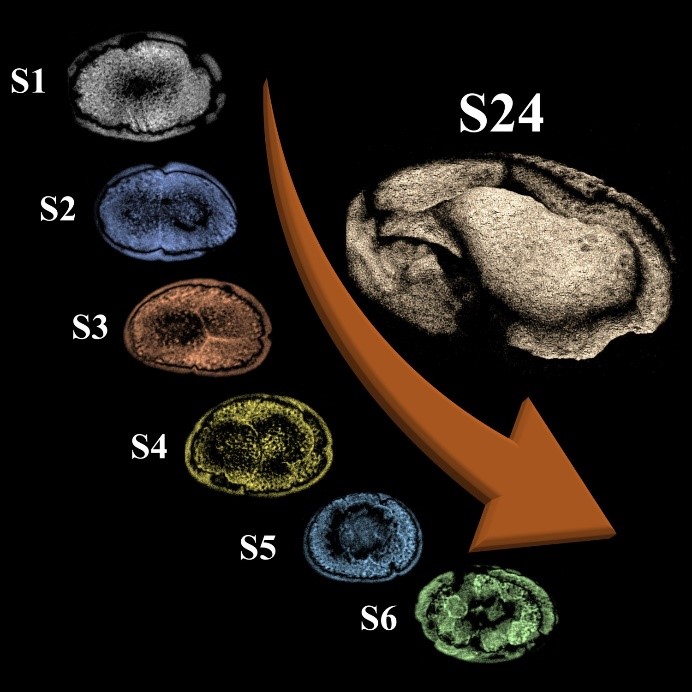DynAMIc project publications: Imaging Parhyale hawaiensis embryogenesis with frequency-domain photoacoustic microscopy
You can find the publication text here.
Problem: Parhyale hawaiensis is a marine crustacean, which has emerged as a powerful model organism to study the molecular and cellular mechanisms of embryonic development and post-embryonic regeneration. Parhyale eggs are surrounded by a transparent eggshell but are filled with yolk that is highly opaque to visible light, thus hampering live microscopic observations during the early cleavage stages with conventional light microscopy approaches.
Methodology: We present the application of a low‐cost frequency domain photoacoustic (FDPA) microscope for the label‐free imaging of live developing embryos of the crustacean model organism Parhyale hawaiensis. The data are subsequently processed to generate accurate maximum amplitude projection and surface reconstructions, delineating the morphological features of the embryos with high resolution and contrast.
Solution: The findings of this study pave the way for the broader adoption of inexpensive PA diagnostic techniques in developmental biology, shedding light on various fundamental processes in established and emerging  model organisms.
model organisms.
